I have a 1970s-vintage video generating board that I'd like to do some work with. I do not have the PSU that it was meant to be connected to. The board wants +/-5V, -12V DC, plus a small 6V AC "reference" rail that shares the same common/ground rail.
I'm a bit puzzled as to the simplest way to recreate this. The original PSU's schematic looks like this:
The 6VAC connection is marked "R" at left, and as you can see, it is connected to one of the transformer tap outputs, bypassing all the rectifier stuff, and its current returns back to the system via the common ground rails to the center taps.
The DC supplies are easy-- this switching quad output Mean Well on amazon puts out +/-5 and +/-12. But this leaves me without an answer for the 6VAC line. I can separately find a 6V transformer but that results in an independently isolated AC. (And that's not helpful to me... right?)
There are modern linear supplies like this one that I assume could be rigged up to pull out an AC line but they don't seem to ever support a -5VDC line.
This isn't for super robust long term use so I'm willing to rig something up to get it going, but I'd like some guidance or suggestions. Short of finding the old transformer and literally rebuilding the original 70s PSU design, is there some way to create a viable power supply that meets this need with modern bits and pieces?
Further information as requested by kind commenters: The schematic for the video board showing use of the 6VAC line is linked here. 6VAC connection is on the right of the diagram, entering an RC ladder and going into the drain of an old JFET:
 (Part values are not marked on this diagram, they are in a different document (page 5), which is annoying.)
(Part values are not marked on this diagram, they are in a different document (page 5), which is annoying.)
